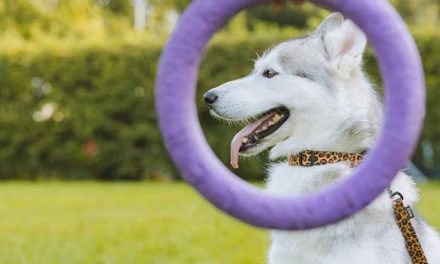Dog training discs, also known as training coins or discs, are a popular and effective tool for reinforcing commands and encouraging positive behavior in dogs.
These simple yet powerful devices can help to correct unwanted behaviors by making a sound that catches your dog’s attention.
Here’s a comprehensive guide on how to effectively use dog training discs for training your furry friend.
What Are Dog Training Discs?
Dog training discs typically consist of two metal or plastic discs that make a loud clapping noise when they come together.
The sound is distinct enough to divert a dog’s attention, making it an excellent tool for interrupting undesirable behaviors or reinforcing desired actions.
Step 1: Choose the Right Time and Place
Before you start training with the discs, choose a quiet environment with minimal distractions.
This allows your dog to focus solely on you and the training.
Ensure that your dog is not overly distracted or excited to start with, as this could hinder the learning process.
Step 2: Familiarize Your Dog with the Discs
Introduce the discs to your dog by letting them sniff and explore the sound.
You can do this by gently clapping the discs together a few times and observing your dog’s reaction.
Make sure to keep a positive tone and encourage your dog to investigate.
Step 3: Pair the Sound with Commands
To effectively use the discs, you need to associate the sound with specific commands or behaviors.
For instance, if you’re training your dog to stop jumping on guests, say “down” as you clap the discs together.
The sound acts as a correctional cue, redirecting their focus back to you.
Step 4: Reinforce Positive Behavior
Once your dog understands the association between the sound of the discs and the command, focus on rewarding positive behavior.
Whenever your dog follows the command correctly, offer praise, treats, or playtime.
This positive reinforcement helps to solidify the behavior you want to encourage.
Step 5: Practice, Practice, Practice
Consistency is key in dog training.
Regular practice sessions will help your dog learn faster and retain the desired behaviors.
Gradually increase the difficulty of the commands or add distractions during training sessions as your dog becomes more proficient.
Step 6: Use Discs Sparingly
While dog training discs are a helpful tool, they should not be used excessively.
Overuse can lead to desensitization, which means your dog may not respond to the sound as effectively.
Use them strategically during training sessions to ensure they maintain their effectiveness.
Step 7: Gradually Phase Out the Discs
As your dog becomes more reliable in responding to commands without the sound cue, gradually reduce your use of the discs.
The goal is for your dog to respond to verbal commands alone.
Continue to reinforce positive behavior with praise and occasional treats to keep them motivated.
Conclusion
Using dog training discs is a straightforward and effective method for improving your dog’s behavior and obedience.
By following these steps, you can create a clear communication system with your dog that encourages learning and positive interactions.
Always remember to be patient, positive, and consistent throughout the training process, as this will help strengthen the bond between you and your furry friend. Happy training!









